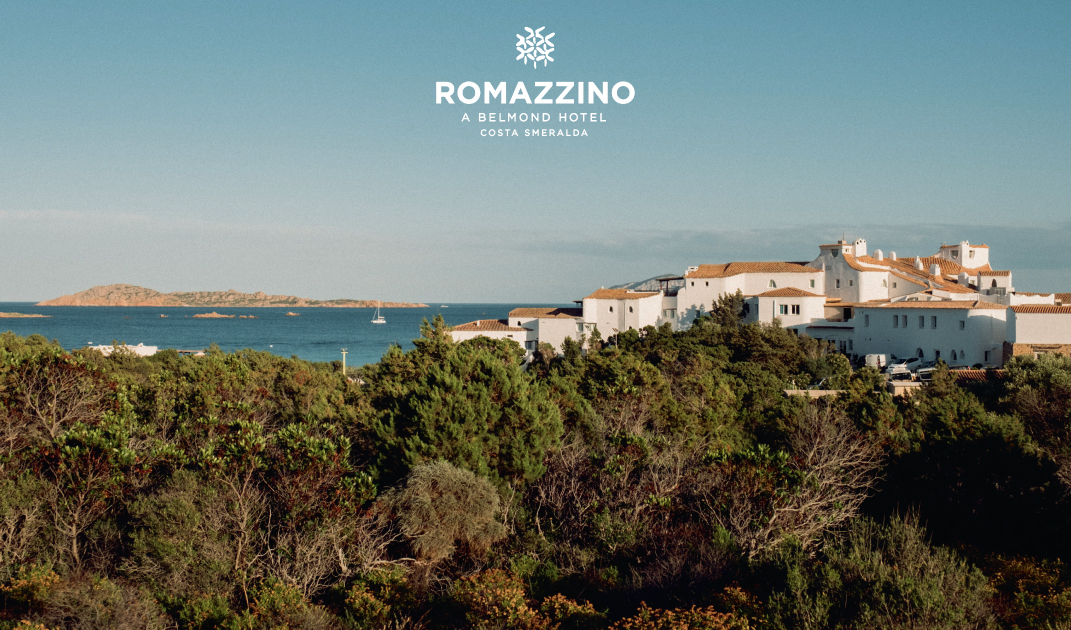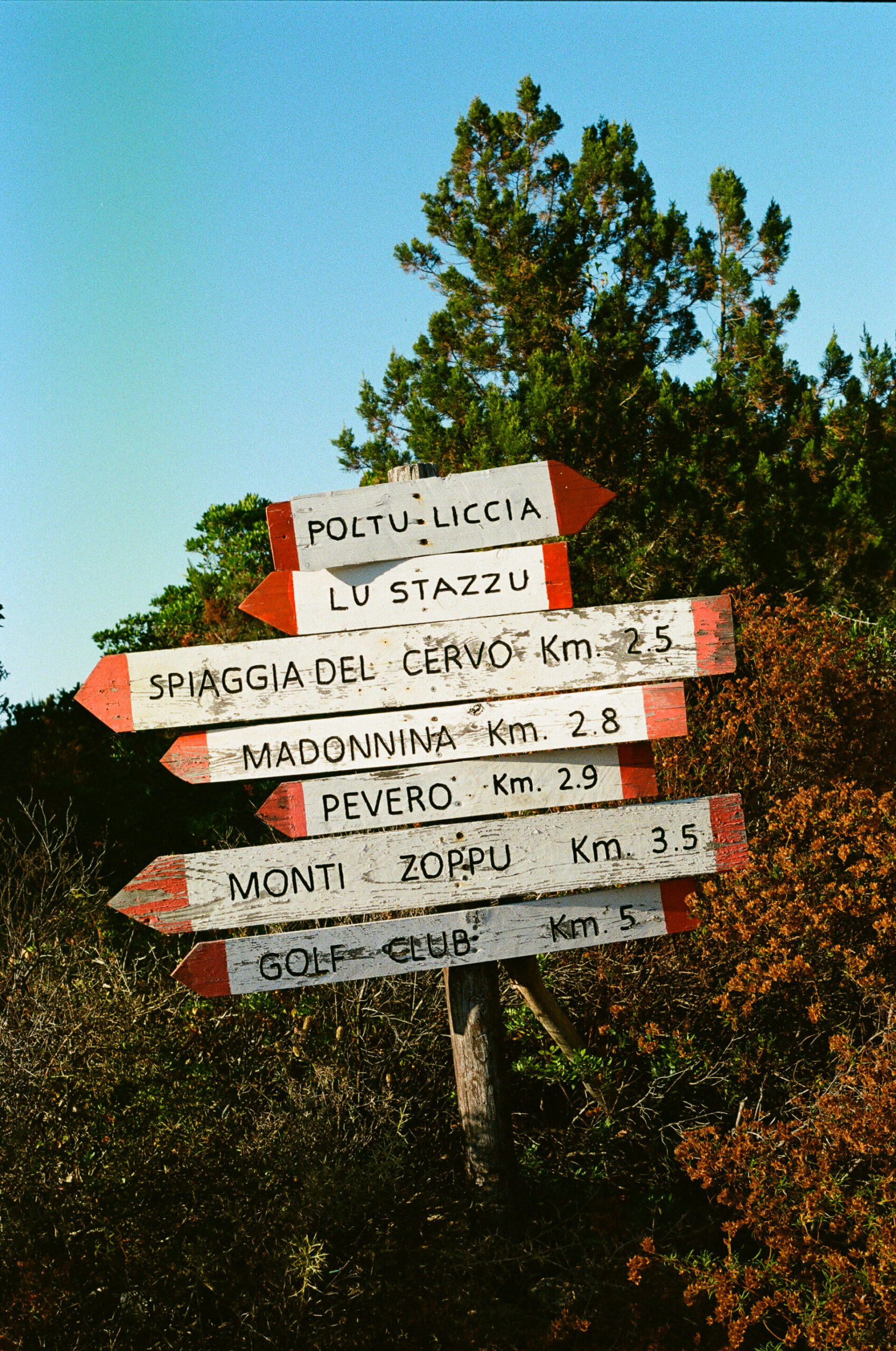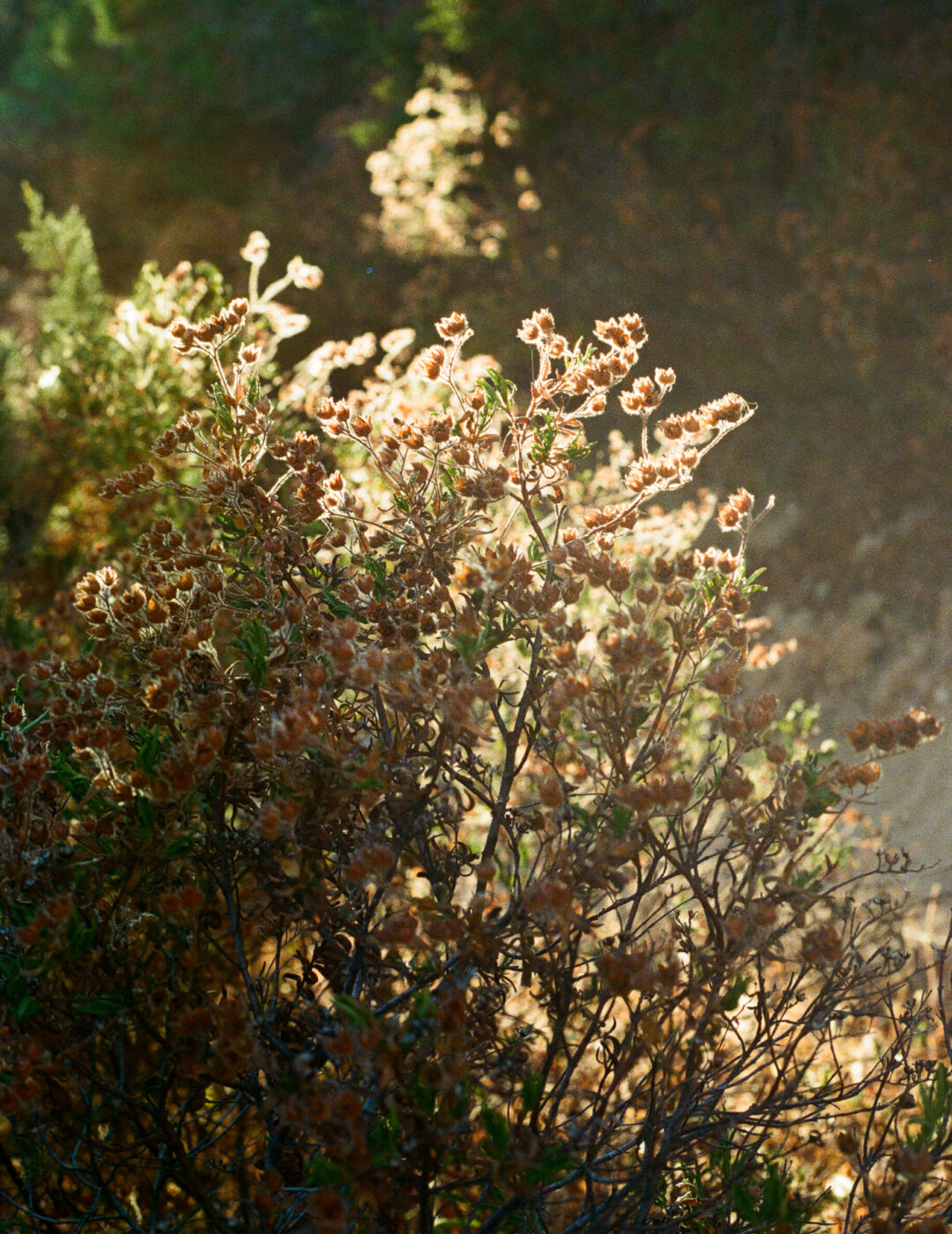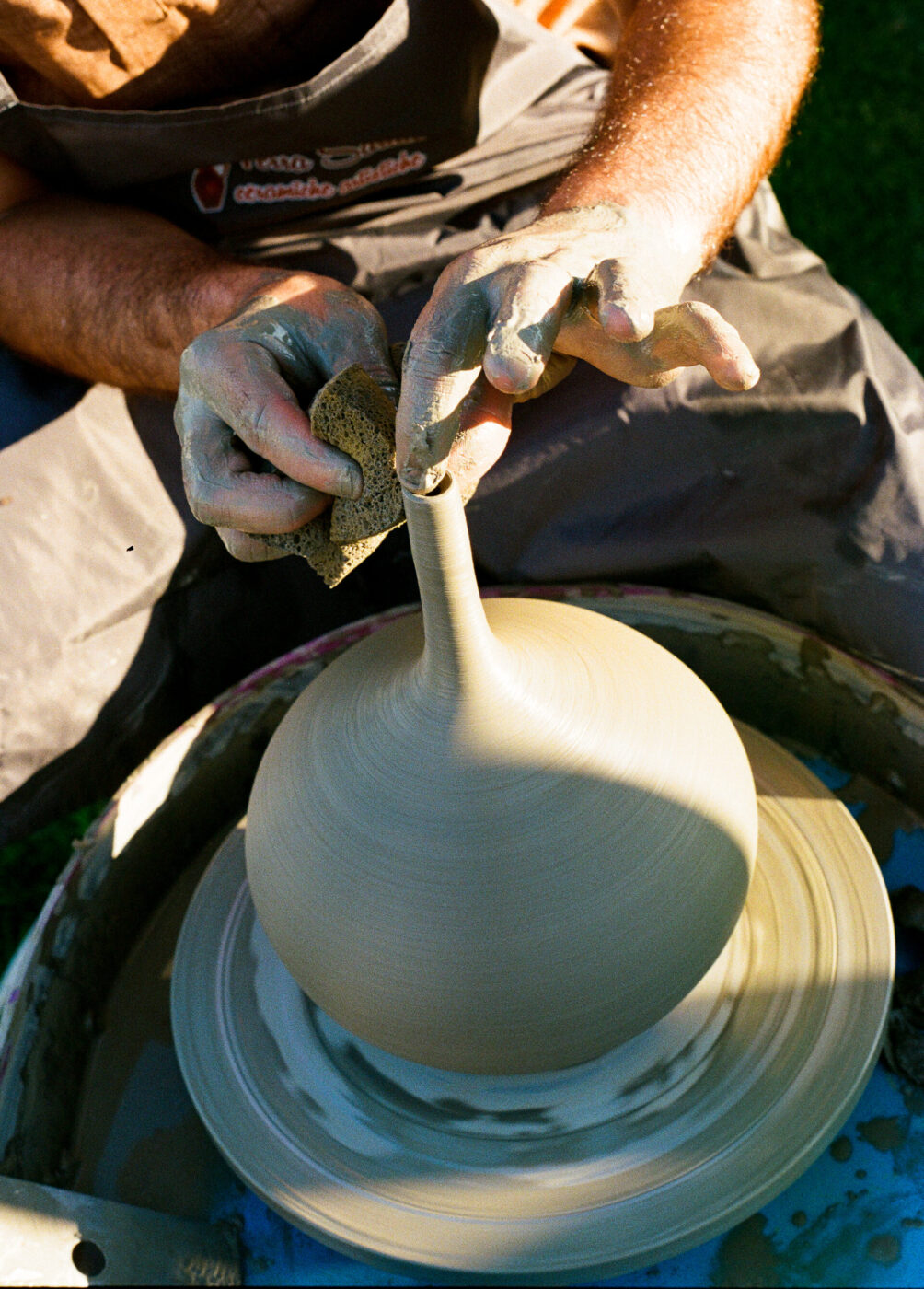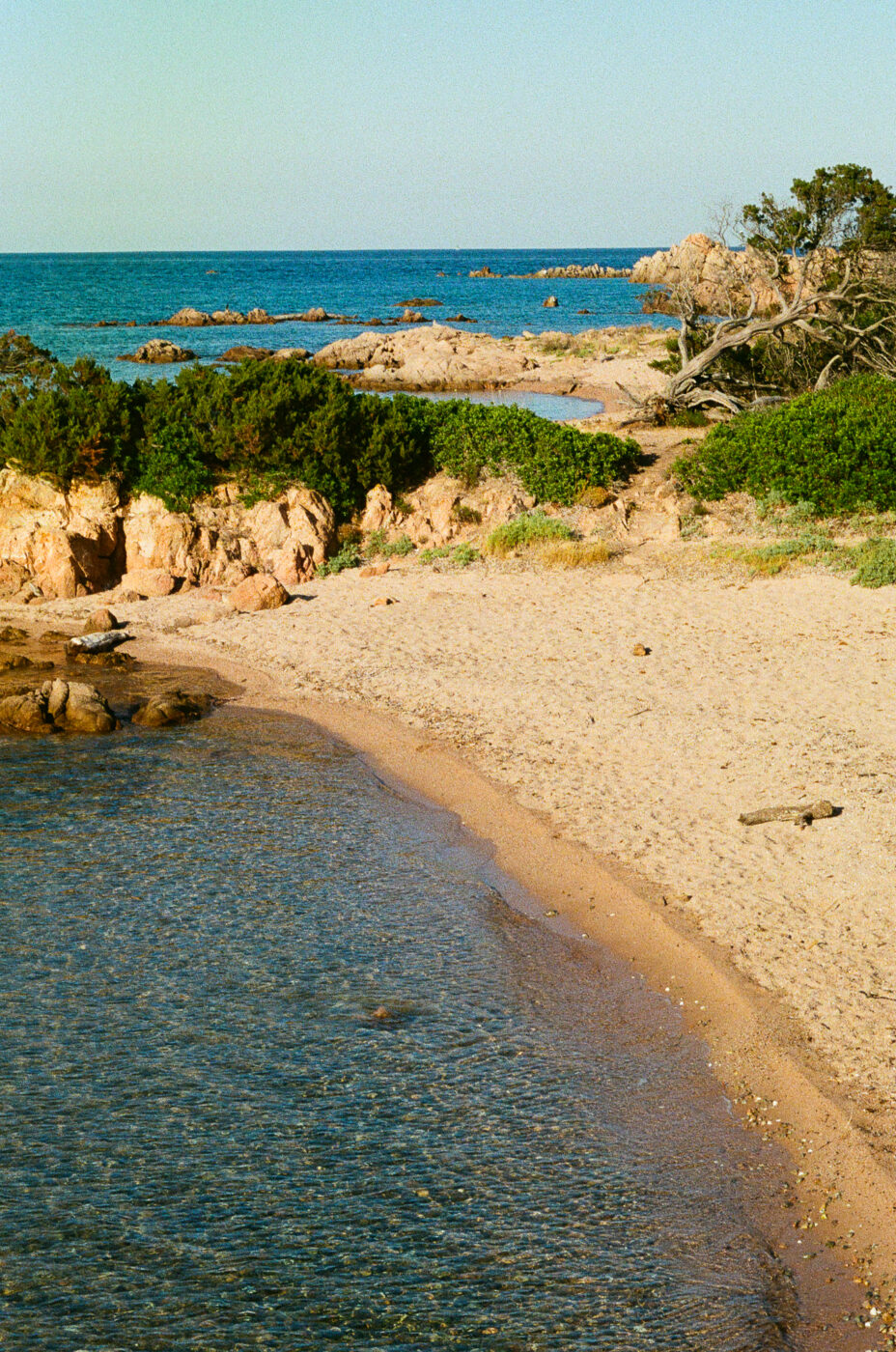Northern Sardinia greets you first with a smell. Step off the plane or ferry and a warm herbal breeze envelops you, carrying the distinctive fragrance of elicriso (Mediterranean helichrysum), almost, and curiously so, curry-like. Locals tell us “la Sardegna sa di elicriso,” Sardinia smells of helichrysum.
Here, however, the land doesn’t just perfume the place, it shapes the way people live—and gives new meaning to the phrase “aging gracefully,” considering the area has nearly 10 times more centenarians per capita than the United States.
While longevity is treated like a lifestyle trend in many parts of the world, for Sardinians it’s a natural outcome of longstanding cultural habits shaped by geography, tradition, and a deep connection to the land. From wild herbs and botanical skincare to honey and handmade ceramics, this part of the island offers a case study in how local materials, seasonal rhythms, and inherited knowledge continue to inform daily life. This is la vita sarda. (Spoiler: no one’s counting their steps or massaging kale.)

Elicriso, the scent of Sardinia
Herbs & honey in Sardinia’s wild landscape
Elicriso symbolizes eternity and memory, say the locals, who call the plants “immortelle” (“everlasting”). The flowers bloom in May and hold their vivid yellow and shape all summer, even when dried. They’ve been long treasured here for their healing properties and used in traditional skin remedies, like those made by Helysol Sardinia. The local brand’s skincare line is built around elicriso, which is harvested directly in Gallura and distilled into a pure essential oil that’s incorporated into creams, serums, and body washes. Anti-inflammatory, cicatrizing, and dermo‑purifying, the plant is used for its soothing and regenerative effects on sensitive or sun-exposed skin.
Here on the Gallura coast, more wild aromatics abound: hardy wild lavender (which grows in unusually plump tufts on these shores), cistus rockrose, mastic trees, strawberry trees (corbezzoli), and myrtle blanket the granite hills of the macchia scrub. Even the hotel Romazzino takes its name from romazzinu, the Gallurese Sardinian word for rosemary—fitting, as bushes of rosemary and myrtle line the paths to hidden coves and cliffs, their oils releasing underfoot.
Amid this fragrant scrub roam the island’s honeybees, diligently converting wildflower nectar into one of Sardinia’s most prized elixirs: honey. In this corner of Sardinia, family beekeepers keep hives among the lentisk and lavender, producing miele that is unique to the terroir of the maquis. In fact, Sardinia as a whole punches above its weight in apiculture—the island yields around 800 tons of honey each year, about 6% of all Italian honey, per Sardegna Foreste. A small local collective like Apistela can harvest about 25 quintals of those tons annually. Their bees sip from thistles, asphodel, and Mediterranean heather, but two varieties stand out: lavender honey and the fabled corbezzolo honey. Corbezzolo (strawberry tree) honey—autumnal variety, produced when the strawberry trees bloom late in the year—is an acquired taste, famed as “il miele amaro” (“the bitter honey”). The honey, Italy’s rarest, hits the palate sweet before turning pungent—and its brief Sardinian harvest and antioxidant-rich complexity make it among the most sought-after (and expensive) in the country.
By contrast, the wild lavender honey from these hills is floral and delicately aromatic, so beloved that Romazzino’s own chefs have chosen it as the house honey for guests—perfect for topping seadas, a traditional fried pastry filled with pecorino cheese and lemon peel. Locals also swirl a dollop into warm milk as a remedy, simply savor it alone, or drizzle it over aged pecorino cheese.

Honey production at Apistela
Shepherd life in Sardinia is still going strong
If bees are the island’s invisible workers, shepherds are its soul. Northern Sardinia, with its rolling pastures and granite highlands, has been sheep country since time immemorial. Here, to be a shepherd is heritage and a point of pride passed down through generations.
It’s common for family-run dairies to use raw milk from their own flock, transforming it in copper cauldrons into wheels of fragrant Pecorino Sardo. Only healthy sheep grazing wild forage can give the rich milk needed for authentic pecorino, local farmers contend. The resulting cheese—nutty and sharp, imbued with notes of the wild herbs in the ewes’ diet—is a pillar of the local economy and a staple of the Sardinian table.
Case in point: culurgiònis, Sardinia’s emblematic stuffed pasta from the interior Ogliastra region. These plump dumplings—most often filled with a mix of potato, mint, and pecorino—are sealed with an intricate braided stitch meant to resemble a sheath of wheat (they were traditionally made to celebrate the harvest). Today you might find culurgiònis on fine dining menus, but the best ones are those made without the froufrou. “At home, my nonna makes culurgiònis all the time. I learned to make them from her,” Damiano, the sous chef at Romazzino tells us. (Eating well is also one of the keys to well-being on an island that famously enjoys extraordinary longevity, but more on that later.)

Codolesu's culurgiònis
Sardinian ceramics are a tradition that never cracks
Beyond food, Sardinia’s connection to the land is also reflected in its crafts, notably the ceramics made from local clay and renowned for their sinuous shapes and nature-inspired motifs—swirling geometric patterns and floral and marine symbols painted in Mediterranean blues and oranges. On the eastern flank of Sardinia, between La Caletta and Siniscola, the Deiana family has been shaping the island’s clay into ceramics for four generations at Terra Sarda Ceramiche Artistiche.
“È una tradizione sarda,” Gianni Deiana tells us. “Ci sono i paesi proprio sardi, tipo Siniscola, Semeni, Oristano, che sono i paesi dove c’è l’argilla.” (“It’s a Sardinian tradition. There are truly Sardinian villages, like Siniscola, Semeni, Oristano—places where there’s naturally clay.”)
Gianni learned the craft as a boy at his father Salvatore’s side, throwing terracotta jugs and bowls in the family’s workshop alongside his brother Massimo. Today, he runs Terra Sarda with his wife Marina and their daughters, who hand-paint each object; you’ll find traditional lapwings and rustic water pitchers alongside elegant centerpieces, lamps, sconces, and even ceramic house numbers.
It’s the kind of slow, intentional work that seems to shape not just objects, but lives—a quality that runs deep through this part of Sardinia.

A vase in the works at Terra Sarda Ceramiche Artistiche
Lessons from the original Blue Zone
Northern Sardinia forms part of one of the world’s first identified Blue Zones—regions where people live remarkably long, healthy lives. Sardinia, in fact, was the original case study, with, as said, nearly 10 times more centenarians per capita than the United States, especially in a cluster of inland mountain villages known for their unusually high number of male centenarians.
The secret? A mix of genetics and lifestyle. A rare M26 marker is common due to long geographic isolation, but what’s more relevant—and replicable—are the daily habits. Sardinians traditionally eat a mostly plant-based diet rich in whole grains, natural sugars (choosing the prized honey over refined kinds), legumes, seasonal vegetables, and grass-fed cheese like Pietro’s pecorino, occasionally paired with meat and a glass or two of Cannonau wine, which is particularly high in antioxidants.
“Exercise” here is also built into life. Elders walk hilly streets, tend gardens, and chop wood well into their 90s. Just as vital, scientists argue, is the social fabric: close-knit villages where grandparents live at home and neighbors gather to chat in the piazza. One study even noted regular “afternoon laughing sessions” among older men was a habit linked to reduced stress and better health.
All of this—natural movement, a wholesome diet, strong community ties, clean air—creates a kind of unintentional wellness, the kind that doesn’t require tracking, optimizing, or scheduling. Longevity here isn’t the goal, but a side effect of living with purpose, creativity, connection, and joy. It’s a refreshingly far cry from the hyper-curated wellness trends of elsewhere. No yoga apps, no green juice regimens, no wristbands analyzing your sleep.
What it all comes down to, in the end, is that in Sardinia, life is long because it is well lived.
